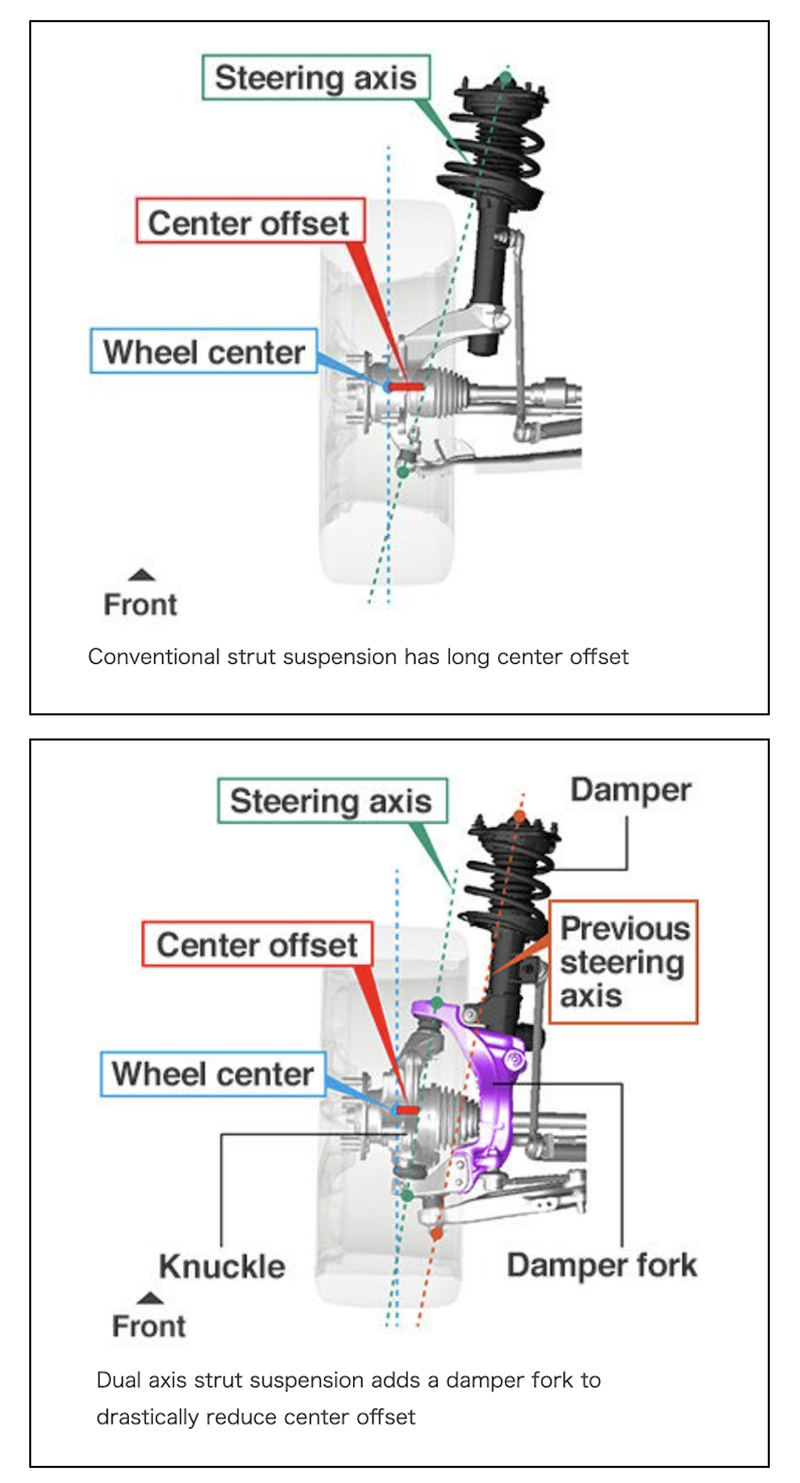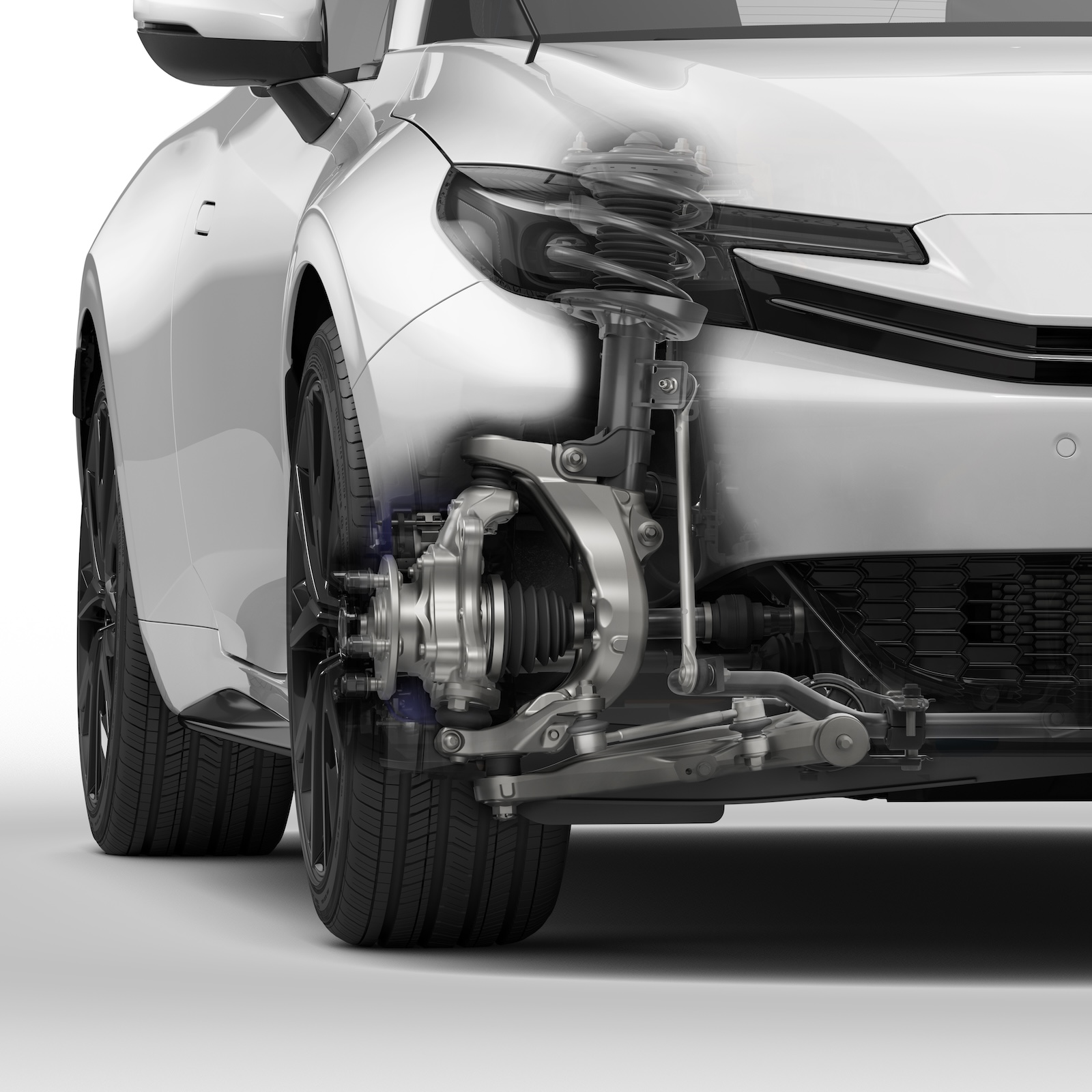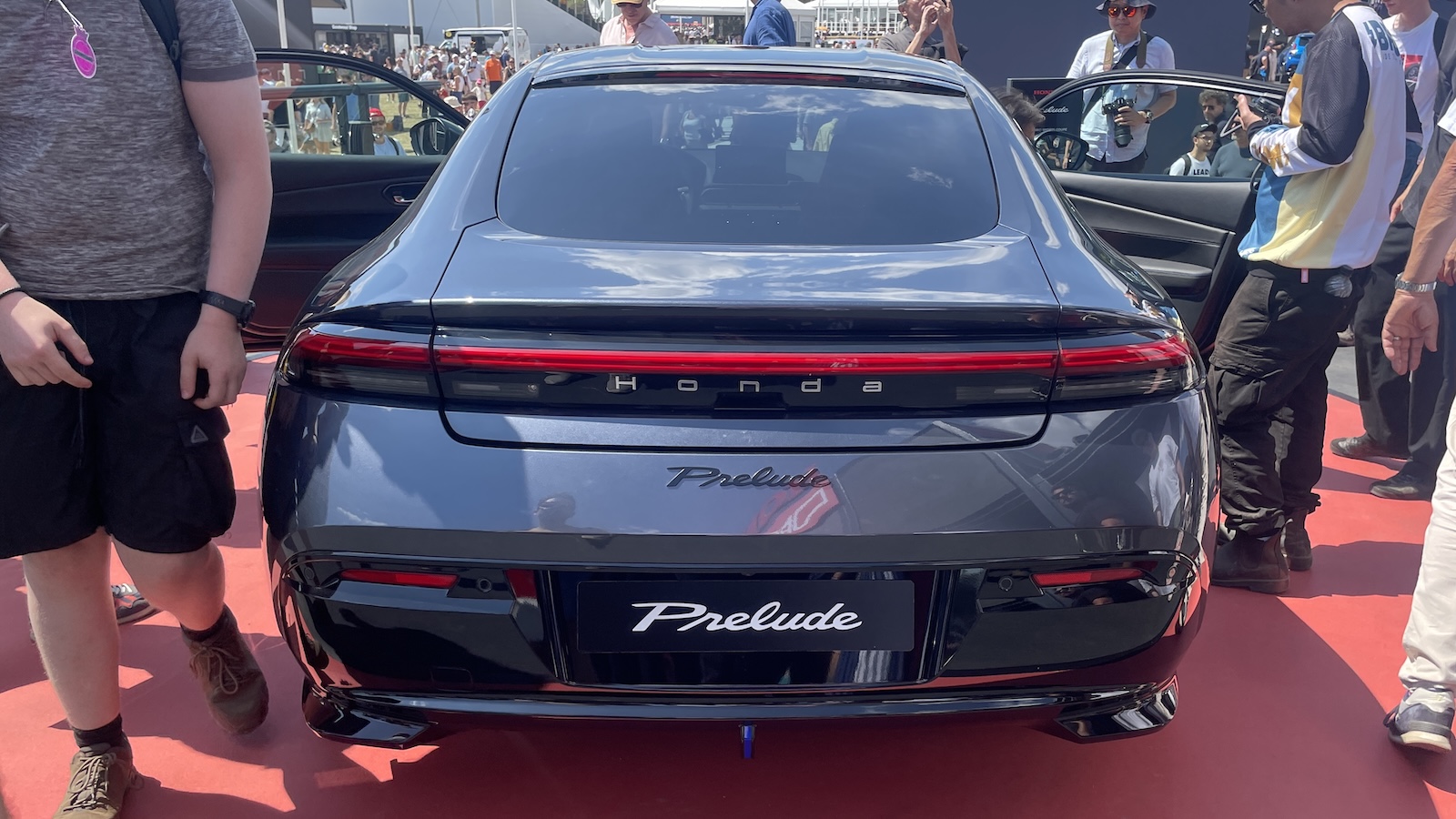Now that we’re in the second half of 2025, the countdown to the new 2026 Honda Prelude is officially on. As expected, the information roll-out is a bit of a slow burn, but Honda has officially confirmed that the new Prelude will use the same fancy dual-axis front suspension as the hot Civic Type R, which bodes well for the purported handling prowess of this hybrid coupe.
A normal MacPherson Strut front suspension uses the strut top as an upper pivot point, meaning the steering axis is basically an imaginary line descending diagonally from the top of the strut through the ball joint on the lower control arm. It’s a cheap setup to make, but the sheer angle of the steering axis can result in sub-optimal center offset—the distance between the steering axis and the center of the contact patch when measured at the hub. With wide wheels and tires on a front-wheel-drive car requiring relatively low offsets to clear hard points on the vehicle while turning, it’s common for sport compact cars to have enough center offset to exacerbate torque-steer, so Honda came up with its own fairly simple solution:
Spacer

By putting the damper on a cast fork like many all-wheel-drive versions of rear-wheel-drive cars use for their front suspensions, and connecting the knuckle to that fork using an upper ball joint, Honda’s changed the steering axis of its high-performance MacPherson Strut suspension to be flatter and far closer to the center of the contact patch at the hub. This allows for substantially wider tires, a smaller center offset, and a more advantageous scrub radius, which decreases torque steer and increases roadholding. The Dual Axis Strut setup is a significant part of why the Civic Type R drives so nicely, and it should be up to the task of keeping electrified torque under control.

Speaking of Type R parts, Honda also confirmed that the Brembo front brakes on the new Prelude are the same parts you get on a Civic Type R, meaning four-piston aluminum front calipers and two-piece discs, and track widths are identical between the Prelude coupe and the Civic Type R hot hatch. Of course, there will be calibration differences between the two models, from the blended pedal calibration for the Prelude’s hybrid system to damper tuning that Honda promises is more road-focused.
Of course, two big unknowns remain around the new Prelude, one of which we have somewhat of a bead on, and another that’s anyone’s guess. First up, power for North American models. Honda has confirmed to Top Gear that the Prelude uses more or less the same powertrain as the Civic Hybrid, and that European models will get 181 horsepower. Will North American examples get the same 204 horsepower as the U.S.-market Civic Hybrid? Quite possibly, although the addition of a simulated manumatic mode leaves a touch of a question mark hovering over this area. Considering it wouldn’t make much marketing sense for the U.S.-market Prelude to make less power than the Civic Hybrid, America getting a more potent Prelude than Europe seems plausible.

The second big question, of course, is price. If Honda can keep the Prelude’s base price within a few thousand dollars of the $31,645 that a 2026 Civic Sport Hybrid Hatchback commands, there shouldn’t be too much issue shifting units, even if it is a niche car. However, if pricing comes in substantially higher, the already niche proposition of a three-door liftback coupe could get even more niche. I guess we’ll find out closer to the end of this year, when the 2026 Honda Prelude is expected to roll into North American dealerships.
Top graphic image: Honda
Support our mission of championing car culture by becoming an Official Autopian Member.









I’m going to be honest, I really like what I’ve seen of the Prelude. I don’t mind the hybrid and I think it looks good.